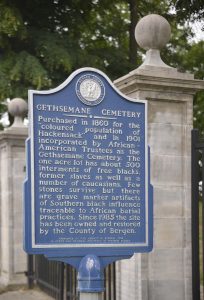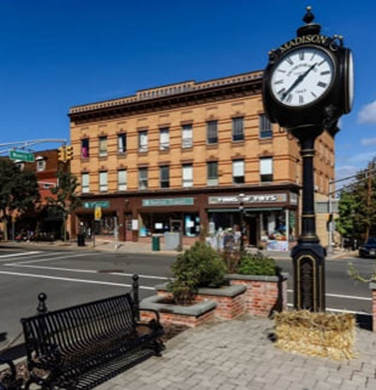Gethsemane Cemetery might simply be described as the final resting place for the remains of 500 African Americans. But, as with many cemeteries, this “finality of life” is just the beginning to a rich history.
Located in a small but busy part of southwest Bergen County, this 1 acre of land was first deeded in 1860 to three white Hackensack citizens who stated it would be “a cemetery for the colored population of the Village of Hackensack. The first documented burial was in 1866. At times it was known as the “Moonachie Colored Cemetery” (after a nearby road), the “Hackensack Colored Cemetery” and “San” or “Sand Hill Cemetery” (a name for the surrounding area.) On the 21st of March 1901 and with the passing of white ownership to a black trusteeship of seven it was respectfully renamed Gethsemane Cemetery.
People interred in Gethsemane demonstrate important aspects of the history of the Civil Rights Movement in the United States. Visiting the graveside of Elizabeth Dulfer reveals her incredible journey through life. Elizabeth was born a slave in 1790, freed in 1822 and then acquired some of the largest brick making clay deposits in the area. Many of the Gethsemane burials reflect an association with laborers who worked in these local clay pits. She rose to become one of the wealthiest land owners in Bergen County. During her lifetime she even assisted the organization of a smaller African-American cemetery in Bergenfield, NJ. She lived to be 90 years old and was interred in 1880.
Samuel Bass, a prominent sextant with the Hackensack First Baptist Church, intended to be buried in the all white Hackensack Cemetery. Because of his color, his last wish was denied and was rested in Gethsemane. In January 1884, the denial became a heated controversy locally and nationally which enraged New Jersey Governor Leon Abbett to declare that “The regulation that refuses a Christian burial to the body of a deceased citizen upon the ground of color is not…a reasonable regulation” Two months later the New Jersey Legislature enacted he “Negro Burial Bill” that desegregated the state’s cemeteries. Discovering a marker for William Robinson, it simply states he served on the USS Savannah during the Civil War. And although they have no grave markers, two other Civil War veterans Silas M. Carpenter and Peter M. Billings served with honor with the Tenth Corps’ 29th (Colored) Connecticut Volunteer Regiment. There are so many stories revealed within Gethsemane!
Preserving a sacred African Americans burial place
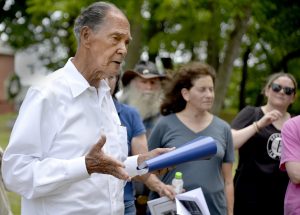
rnold Brown conducting a 2021 Gethsemane tour on Juneteenth
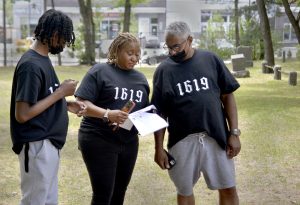
Visitors to Gethsemane on Juneteenth 2021
Some of the ideas Arnold hopes people will take away from a visit to Gethsemane are the unique contributions from the lives the people memorialized therein. He also believes the cemetery demonstrates fundamental West African burial customs and explains the African concepts of four cycles of the life or “moments of the sun” and why afterlife caretakers would scatter the dead’s personal belongings around the grave and how erecting east facing memorials would facilitate the spirit’s rising rebirth with the coming of the new sun. Arnold says “the sanctity of life is important and how you treat someone when they are no longer here and have gone beyond. You got to have respect for lives lived” Arnold Brown is planning a comprehensive book on African American history throughout Bergen County.
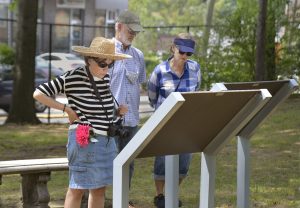
Visitors Reading Plaques on Juneteenth 2021
Recently Bergen County’s Division Director Cynthia Forster has been preparing for another round of Ground Penetrating Radar to improve site and grave mapping. When visiting Gethsemane there are handouts, guides and four meditation plaques situated around the cemetery displaying contextual information on all aspects regarding the African Americans resting close by. A Guide by Cell link is displayed at the cemetery’s entrance “The DCHA is always ready to work with groups and single researchers.” Cynthia also notes that if you are interested in research an/or a free tour by appointment of this secured, historic site you should contact : Bergen County Historic Sites at 201-336-7267 or at www.co.bergen.nj.us/parks. The cemetery entrance is on Summit Place off Rte. 46 in Little Ferry, NJ 07643.
